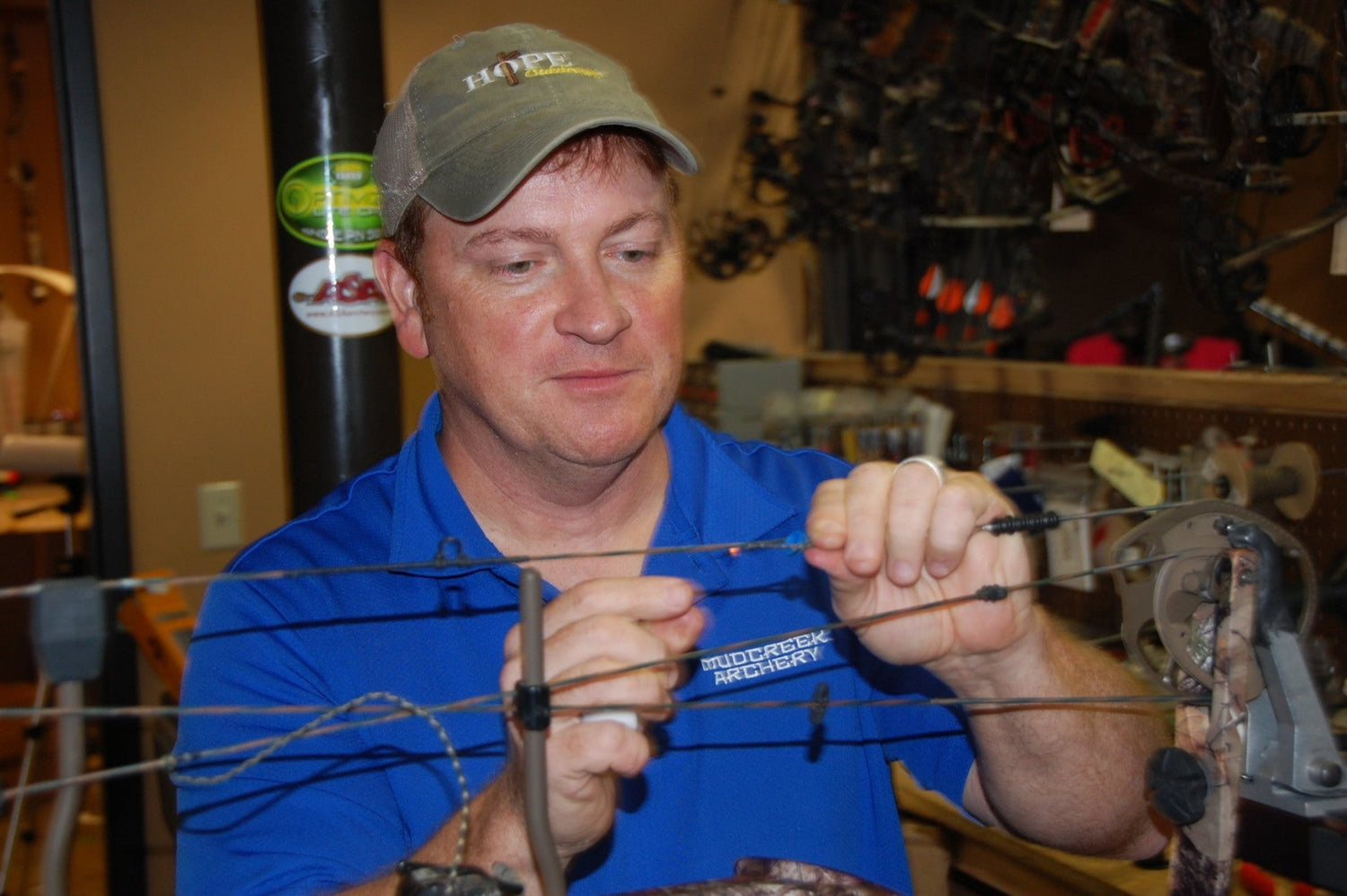Compound bows are amazing machines, but they require maintenance just like any other. Knowing what to look for and how to fix it are important elements of responsible ownership, not to mention satisfactory performance. For a quick checklist, here are a few items the bow-tuning experts have to offer:
- Make sure your strings and your cables are waxed. Wax helps both of these critical components do their job without snagging or breaking. Cables and strings in need of wax will typically appear dry, with a gray or white color, and may show signs of wear in the form of fraying or fuzz. Bow wax is available in tube form from your local archery shop. Spread a small amount of wax on a section of string or cable, then rub the area vigorously with a piece of leather to heat the wax-up so it can coat evenly.
- Check your arrows for cracks or dents, especially if you’re shooting aluminum arrows instead of carbon. Dispose of any that don’t appear to be sound. Re-fletch any arrows that need new fletchings or vanes.
- Check your sight pins to make sure they are not loose or have any broken parts. If your setup includes a piece of rubber tubing that keeps your peep sight pointed downrange, check it for dry rot or wear before it calls itself to your attention by breaking. A slap in the eye with a rubber hose is not an ideal start to a new bow season.
- Sharpen or replace broadheads. Many mechanical and fixed-blade broadheads offer replaceable parts or can be simply replaced altogether. More traditional broadheads, however, require regular sharpening whether they’ve been used or not. Like a pocket knife on a stick, the oxidation alone can cause them to dull and they should be touched up often.
- If your bow is a dual-cam model, make sure their timing is on. Check for this by slowly drawing the bow. As you bring the string back, both should break over at the same time. If instead of a single “bump,” you feel two separate bumps, the cams are out of time and should be brought to the attention of a professional.
- Consider taking your bow to an archery shop for a tune-up. A professional archery shop will make sure your nock point and rest are aligned correctly. It will also service the cams and check for any other problems the bow may have developed, either in use or in storage.
Avoiding crossbow blues
Crossbows, which have become wildly popular of late, have a few key points all their own that require minding. “The life and death of crossbows is rail lube,” Paul McDaniel, of Mud Creek Archery, in Tupelo, Miss., says. The rail on a crossbow is where an arrow, or bolt, sits once loaded and before it’s fired. The crossbow’s string, which needs wax just like those found on vertical bows, will not last long if the crossbow’s rail is left dry. “Additionally, when you’re loading your crossbow, make sure the nock is turned correctly and engaged with the string,” McDaniel said. “Too often, people assume if the odd-colored fletching is turned down, that’s all they have to look for, but the nock may not match up. If you fire your crossbow with the nock not fully engaged, it’s essentially the same thing as dry firing it.” Dry firing a bow or crossbow, which means drawing either and dropping the string without having an arrow properly loaded, has catastrophic consequences for either instrument’s structure and must be avoided. “In both cases,” McDaniel said, “don’t store your bow or crossbow in the heat and don’t shoot a bow that is hot. Even modern bows can de-laminate and shatter to ruins if you’re not careful.”
Another dimension
The leap from flinging arrows into a flat backstop to launching the same through the woods at a live animal is one bowhunters bridge every fall through the use of 3-D target shooting. Better at simulating real hunting scenarios than their two-dimensional counterparts, life-sized foam targets addressed from a variety of angles and varied distances help train the archer’s eye and steady his or her hand by building confidence along with muscle memory.
“There’s a lot of homework involved in bowhunting,” Brian Ellis, with Mudcreek Archery in Tupelo, Miss., said, “and the homework is done here. Bowhunting is about working the animal and waiting for the perfect shot, and 3-D shooting teaches you how to make the shots you’ll need to make. “So many hunters go out and miss the first deer of the year and wish they had shot more. What they should have also done was shoot differently. People practice at 20 yards, at 30 yards, at 40 yards, but they don’t practice nine yards, 14 yards, 26 yards, and so on. Regularly shooting a 3-D course gives you practical time shooting all sorts of distances.”
The life-sized targets also help build a great variety of skills. Learning to concentrate on hitting the animal’s vital area with the shot, getting a feel for where to aim at an animal quartering away, and generally attaching to archery’s muscle memory a visual image of what a buck at 18 yards or 32 yards looks like builds a tremendous amount of confidence in each shooter. “Hunting is a head game,” Robison said. “You’re not going to kill anything if you’re not confident.”




Leave a comment
This site is protected by hCaptcha and the hCaptcha Privacy Policy and Terms of Service apply.